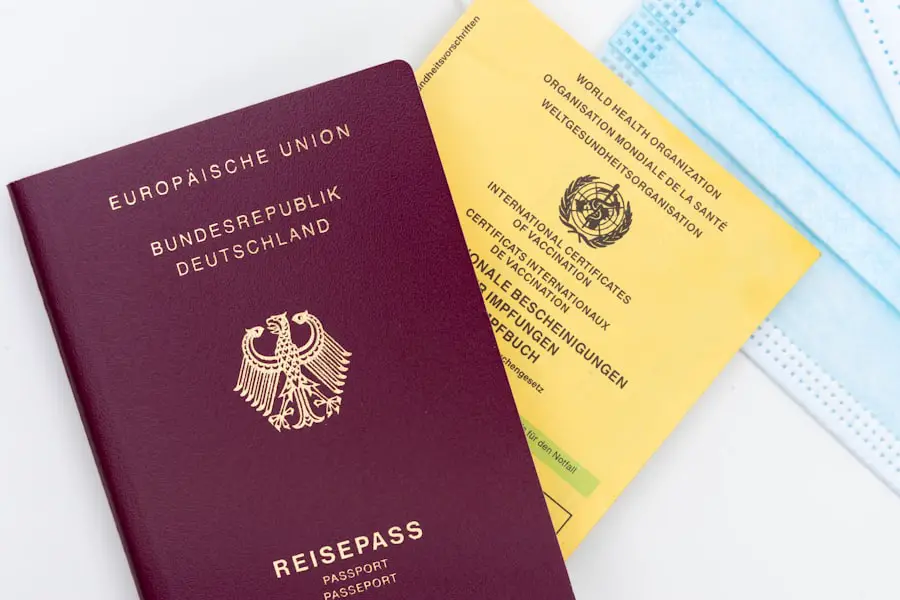The I-130 petition, formally known as the Petition for Alien Relative, is a crucial step in the family-based immigration process in the United States. It is filed by a U.S. citizen or lawful permanent resident to establish a qualifying relationship with a foreign national relative.
The approval of the I-130 petition signifies that the U.S. Citizenship and Immigration Services (USCIS) recognizes the legitimacy of the relationship, which is a prerequisite for the relative to apply for a visa or adjust their status. The process begins with the petitioner submitting the I-130 form along with supporting documentation, such as proof of citizenship, evidence of the familial relationship, and any required fees.
Once the I-130 petition is submitted, it undergoes a thorough review by USCIS. The processing times can vary significantly based on several factors, including the service center handling the application and the specific relationship between the petitioner and the beneficiary. For instance, immediate relatives of U.S.
citizens, such as spouses and children under 21, typically experience faster processing times compared to other family categories that may face longer wait times due to annual visa caps. After approval, the petition is forwarded to the National Visa Center (NVC), which will then guide the beneficiary through the next steps in obtaining a visa.
Key Takeaways
- The I-130 approval process is the first step in obtaining a family-based immigrant visa.
- After I-130 approval, it is possible to travel internationally, but there are potential risks to consider.
- Potential risks of traveling after I-130 approval include abandonment of the application and denial of entry into the U.S.
- Before traveling after I-130 approval, it is important to take steps such as obtaining a travel document and notifying the National Visa Center of any changes.
- Documents required for traveling after I-130 approval include a valid passport, visa, and any additional supporting documents.
Traveling After I-130 Approval
Understanding the Implications of Travel
Beneficiaries often find themselves in a state of limbo, especially if they are outside the U.S. and eager to reunite with their family members. Understanding the implications of travel during this period is essential to avoid jeopardizing their immigration status or future applications.
Traveling While in the U.S. on a Temporary Visa
For those who are already in the U.S. on a temporary visa or other legal status, traveling after I-130 approval may be less complicated but still requires careful consideration. If they leave the country while their adjustment of status application is pending, they may risk abandoning their application unless they have obtained advance parole.
Seeking Professional Guidance
Therefore, it is crucial for beneficiaries to consult with an immigration attorney before making any travel plans to ensure compliance with immigration laws and regulations. This will help them avoid any potential risks and ensure a smooth immigration process.
Potential Risks of Traveling After I-130 Approval

Traveling after I-130 approval carries several potential risks that beneficiaries must carefully evaluate. One of the primary concerns is the possibility of being denied re-entry into the United States. If a beneficiary travels abroad without proper documentation or while their adjustment of status application is pending, they may face challenges at the border upon attempting to return.
Immigration officials have broad discretion in determining admissibility, and any perceived inconsistencies in an individual’s immigration history can lead to complications. Another significant risk involves changes in immigration policy or personal circumstances that could affect a beneficiary’s eligibility for a visa or adjustment of status. For example, if there are changes in the beneficiary’s marital status or if they encounter legal issues while abroad, these factors could complicate their immigration journey.
Additionally, if there are delays or changes in processing times at USCIS or the NVC, beneficiaries may find themselves stranded outside the U.S., unable to return to their families during critical periods. (Source: USCIS)
Steps to Take Before Traveling After I-130 Approval
| Steps | Description |
|---|---|
| Check Visa Bulletin | Review the visa bulletin to see if your priority date is current. |
| Complete Form DS-260 | Fill out the immigrant visa application form online. |
| Pay Fees | Pay the immigrant visa application processing fee and affidavit of support fee. |
| Submit Required Documents | Provide necessary documents such as passport, birth certificate, and police certificates. |
| Attend Interview | Attend the visa interview at the U.S. embassy or consulate in your home country. |
Before embarking on any travel plans after I-130 approval, beneficiaries should take several important steps to safeguard their immigration status and ensure compliance with U.S. immigration laws. First and foremost, it is advisable to consult with an experienced immigration attorney who can provide personalized guidance based on individual circumstances.
An attorney can help assess any potential risks associated with travel and recommend appropriate actions to mitigate those risks. Beneficiaries should also verify their current immigration status and ensure that all necessary applications are filed correctly and timely. If they are in the U.S.
and have applied for adjustment of status, obtaining advance parole is crucial before leaving the country. This document serves as a safeguard against abandonment of their application and allows them to return without complications. Additionally, beneficiaries should keep abreast of any changes in immigration policies that could impact their situation, as well as maintain open communication with their family members in the U.S.
regarding their travel plans.
Documents Required for Traveling After I-130 Approval
When planning to travel after I-130 approval, it is essential for beneficiaries to gather and prepare all necessary documentation to facilitate smooth re-entry into the United States. Key documents include a valid passport from their home country, which should not expire during their intended travel period. Additionally, if they have received advance parole, they must carry this document with them as it is critical for re-entry into the U.S.
Beneficiaries should also have copies of their approved I-130 petition and any related correspondence from USCIS or the NVThese documents serve as proof of their pending immigration case and can be helpful if questions arise during re-entry. Furthermore, it is advisable to carry evidence of ties to their home country, such as employment letters or property ownership documents, which can demonstrate their intent to return if questioned by immigration officials upon arrival in the U.S.
Traveling on a K-3 Visa After I-130 Approval

The K-3 visa is specifically designed for foreign spouses of U.S. citizens who are awaiting approval of their I-130 petitions. This nonimmigrant visa allows them to enter the United States while their immigrant visa application is being processed.
Once an I-130 petition is approved, beneficiaries can apply for a K-3 visa at a U.
consulate or embassy abroad. This process typically involves submitting additional documentation, including proof of marriage and evidence that the I-130 has been filed.
Traveling on a K-3 visa offers several advantages for beneficiaries eager to reunite with their spouses in the U.S. It allows them to live together while waiting for their immigrant visa processing to be completed, thus minimizing separation time. However, it is important for K-3 visa holders to understand that this visa does not grant permanent residency; they must still complete the necessary steps to adjust their status once in the U.S.
Traveling on a CR-1 or IR-1 Visa After I-130 Approval
The CR-1 (Conditional Resident) and IR-1 (Immediate Relative) visas are immigrant visas granted to foreign spouses of U.S. citizens after an I-130 petition has been approved. The CR-1 visa is typically issued when the couple has been married for less than two years at the time of approval, while the IR-1 visa applies to couples married for more than two years.
Both visas allow beneficiaries to enter the United States as lawful permanent residents upon arrival. Traveling on a CR-1 or IR-1 visa provides significant benefits compared to nonimmigrant options like the K-3 visa. Upon entry into the U.S., CR-1 and IR-1 visa holders are granted permanent resident status immediately, which includes access to various rights and privileges such as work authorization and eligibility for certain government benefits.
However, CR-1 visa holders must be mindful of conditions attached to their residency status; specifically, they must apply for removal of conditions within 90 days before their two-year anniversary of obtaining conditional residency.
Final Considerations for Traveling After I-130 Approval
In conclusion, traveling after I-130 approval requires careful planning and consideration of various factors that could impact an individual’s immigration journey. Beneficiaries must remain informed about their current immigration status and any potential risks associated with international travel during this period. Consulting with an immigration attorney can provide valuable insights tailored to specific situations and help navigate complex regulations.
Moreover, maintaining open communication with family members in the U.S., understanding visa options available post-I-130 approval, and ensuring all necessary documentation is prepared are critical steps in facilitating successful travel experiences. Ultimately, being proactive and well-informed can significantly reduce stress and uncertainty associated with traveling after I-130 approval while ensuring compliance with U.S. immigration laws.
If you are looking for the perfect gift for a woman who loves to travel, you should check out this article on the best travel gifts for women. Whether she enjoys exploring new destinations or simply needs some practical items for her next trip, this list has something for every type of traveler. And once your I-130 is approved and you are ready to hit the road, don’t forget to pack a portable fishing rod from this article on the best travel fishing rod or a travel CPAP machine from this article on the best travel CPAP to ensure a comfortable journey.
FAQs
What is Form I-130?
Form I-130, also known as the Petition for Alien Relative, is a form used by a US citizen or lawful permanent resident to establish the relationship to certain alien relatives who wish to immigrate to the United States.
Can I travel after my I-130 is approved?
Yes, you can travel after your I-130 is approved. However, if the beneficiary is outside the United States, they will need to go through the immigrant visa process at a US embassy or consulate in their home country before they can travel to the United States.
Can I travel while my I-130 is pending?
If you are the beneficiary of an I-130 petition and you are outside the United States, it is generally not advisable to travel while the petition is pending. Traveling while the petition is pending may result in complications with the immigration process.
What is the next step after I-130 approval?
After the I-130 petition is approved, the next step depends on the beneficiary’s location. If the beneficiary is outside the United States, they will need to go through the immigrant visa process at a US embassy or consulate in their home country. If the beneficiary is already in the United States, they may be eligible to adjust their status to a lawful permanent resident.
How long does it take for an I-130 to be approved?
The processing time for an I-130 petition can vary depending on the USCIS service center processing the petition and the specific circumstances of the case. Generally, it can take several months to over a year for an I-130 petition to be approved.
